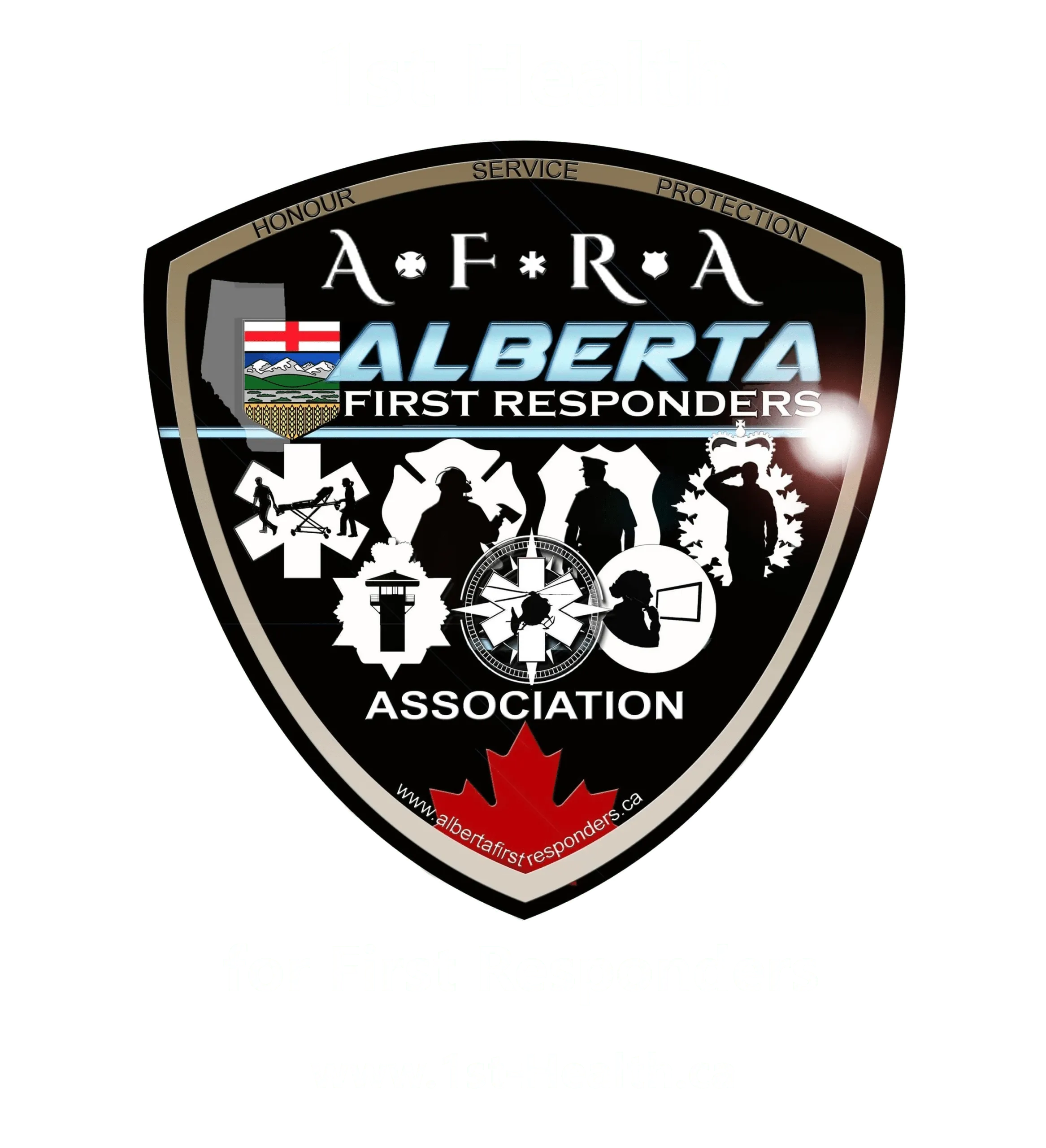Module 4: Nutrition & Physical Activity for First Responders
Your body is your primary tool. Just as you meticulously maintain your equipment and vehicles, you must equally prioritize the maintenance of your own physical machine. This module will help you optimize your body’s performance and resilience through practical nutrition and fitness strategies, specifically designed to address the demanding and often unpredictable challenges of your first responder schedule.
Remember the “1st Health!” philosophy: Your physical well-being is intrinsically linked to your mental and emotional resilience. Fueling your body correctly and engaging in appropriate physical activity are fundamental ways to manage stress, improve mood, enhance sleep, and sustain peak performance when it matters most.
Fueling for Performance: The First Responder Diet
Your body is like a high-performance vehicle; it needs the right fuel to operate effectively, especially under stress. Skip the cheap gas – you need premium.
Macronutrients on Shift: Sustained Energy & Cognitive Function
-
- Protein: Essential for muscle repair, recovery, and satiety. It helps stabilize blood sugar, preventing energy crashes. Include lean protein sources like chicken, fish, lean beef, eggs, Greek yogurt, or plant-based options like lentils and beans with every meal and snack. Think about keeping hard-boiled eggs or individual Greek yogurt cups at the station.
- Healthy Fats: Crucial for brain health, hormone production, and sustained energy. Don’t fear fats! Focus on healthy sources like avocados, nuts, seeds, olive oil, and fatty fish (salmon, mackerel). These slow down digestion, providing a steady energy release.
- Complex Carbohydrates: Your body’s primary energy source. Choose whole grains (oats, brown rice, whole wheat bread), fruits, and vegetables. These provide sustained energy without the spikes and crashes associated with simple sugars. They also provide fibre, which aids digestion.
- Why they’re crucial for you: During long shifts, sudden high-stress situations, or periods of limited access to food, a balanced intake of these macronutrients will keep your energy stable, your focus sharp, and prevent “hangry” irritability. You need sustained fuel, not quick fixes.
Hydration is Non-Negotiable: The Unsung Hero of Performance
-
- Impact of Dehydration: Even mild dehydration can significantly impair cognitive function (focus, decision-making, memory), reduce physical performance, lead to fatigue, cause headaches, and increase susceptibility to heat-related illness. This is especially critical when wearing heavy PPE, working in hot environments (e.g., structure fires, summer wildfires in Alberta), or during prolonged incidents.
- Simple Strategies for Consistent Water Intake:
- Carry a Reusable Water Bottle: Keep it filled and accessible at all times – in your vehicle, at your desk, or in the fire hall/station.
- Set Reminders: Use your phone or watch to remind you to drink water regularly throughout your shift.
- Hydrate Before/After Coffee: Counteract the diuretic effect of caffeine by drinking a glass of water with every cup of coffee.
- Electrolytes (When Needed): For prolonged exertion in hot conditions, consider adding electrolyte tabs or a low-sugar sports drink to replenish lost minerals, but water should be your primary fluid.
- Monitor Urine Colour: A simple visual cue – aim for pale yellow.
- Avoiding the “Fuel Trap”: Say No to the Sugary Rollercoaster
- It’s easy to reach for quick energy fixes like sugary drinks, energy drinks, candy bars, or processed snacks when you’re tired and stressed. However, these lead to:
- Rapid Energy Spikes & Crashes: You get a quick boost, but then you “bonk,” feeling even more tired and unfocused than before.
- Increased Irritability & Anxiety: The rollercoaster of blood sugar can heighten mood swings.
- Long-Term Health Issues: Chronic reliance contributes to insulin resistance, weight gain, and increased risk of chronic diseases.
- Combatting the Trap:
- Choose whole fruits instead of juice.
- Opt for plain water or unsweetened tea/coffee instead of sugary sodas or energy drinks.
- Swap candy for a handful of nuts or seeds.
- It’s easy to reach for quick energy fixes like sugary drinks, energy drinks, candy bars, or processed snacks when you’re tired and stressed. However, these lead to:
Be mindful of “station food” habits – encourage healthier options as a crew.
Practical Nutrition Strategies for Shift Work
Your irregular hours, high-stress environment, and limited breaks make consistent healthy eating a significant challenge. Here are practical strategies to overcome them.
Meal Prep Hacks: Your Secret Weapon
-
- Batch Cooking: Dedicate a few hours on your days off to cook larger quantities of protein (chicken breasts, ground meat), grains (quinoa, brown rice), and roasted vegetables. Portion them into individual containers for quick grabs.
- “Component Prep”: Wash and chop vegetables (carrots, celery, bell peppers) for easy snacking or adding to meals. Boil a dozen eggs for quick protein.
- Overnight Oats/Chia Pudding: Simple, healthy breakfast options that are ready to grab and go for early shifts.
- Smart Snacking: Always have healthy snacks on hand: fruit, nuts, seeds, pre-cut veggies with hummus, cheese sticks, or protein bars (check sugar content).
- Consider packing a small cooler bag for your shift to keep fresh food viable.
Eating on the Fly: Smart Choices When Unavoidable
-
- Sometimes, you’re stuck with limited options. Make the smartest choice available.
- Fast Food: Look for grilled chicken options (sandwich, salad), salads with dressing on the side, or lean protein bowls. Avoid fried foods and excessive sauces.
- Convenience Stores/Gas Stations: Focus on hard-boiled eggs, cheese, jerky (low sodium), nuts, fruit, yogurt, or protein bars over chips, candy, and sugary drinks.
- Grocery Store Stop: If you pass one, grab a pre-made salad, a rotisserie chicken, or fresh fruit for healthier options.
- The goal isn’t perfection, but consistent better choices.
Managing Appetite Changes: Listen to Your Body
-
- Stress-Induced Appetite Loss: In high-stress situations, your body might shut down hunger cues. Even if you’re not hungry, try to consume small, nutrient-dense snacks to keep your energy up. Liquid nutrition like a protein shake can be easier to stomach.
- Emotional Eating/Boredom Eating: When stress is lower or during downtime, you might find yourself eating out of boredom or to soothe emotions. Practice mindful eating (Module 3) and identify if you’re truly hungry or just seeking comfort. Find non-food coping mechanisms.
Physical Activity: Your Stress Reliever & Performance Enhancer
Physical activity is not just about looking good; it’s a powerful tool for managing stress, improving mental health, preventing injuries, and extending your career.
Benefits Beyond Fitness: A Full-Spectrum Advantage
-
- Stress Hormone Reduction: Exercise helps burn off excess adrenaline and cortisol, the stress hormones that linger after high-intensity calls.
- Mood Enhancement: Releases endorphins, dopamine, and serotonin – your natural mood boosters. Reduces symptoms of depression and anxiety.
- Enhanced Sleep Quality: Regular exercise (especially earlier in the day) can significantly improve the depth and quality of your sleep, helping to counteract the effects of shift work.
- Boosted Cognitive Function: Improves focus, memory, and problem-solving skills, which are crucial for your job.
- Increased Energy Levels: Counterintuitively, expending energy through exercise can actually increase your overall energy throughout the day.
Functional Fitness for the Job: Train for What You Do
-
- Your workouts should prepare your body for the physical demands of your role and help prevent injuries.
- Lifting & Carrying: Incorporate deadlifts, squats, lunges, and carries (e.g., farmer’s carries with heavy dumbbells) to build strength for patient lifts, equipment carries, or hose advancements.
- Pushing & Pulling: Focus on exercises like push-ups, overhead presses, rows, and pull-ups to simulate movements like forced entry, hose pulls, or patient drags.
- Bending & Twisting: Ensure core strength and mobility exercises (e.g., planks, Russian twists, medicine ball rotations) are included to protect your spine during awkward movements.
- Cardiovascular Endurance: Maintain a strong aerobic base for sustained energy during prolonged incidents or high-intensity bursts. Running, cycling, or stair climbing are excellent.
- Flexibility & Mobility: Essential for range of motion and injury prevention. Incorporate dynamic stretching before workouts and static stretching afterwards.
Workout Strategies for Irregular Schedules: Make it Work for YOU
-
- Short, Intense Workouts: Even 20-30 minutes of high-intensity interval training (HIIT) or resistance training can be incredibly effective when time is limited.
- Bodyweight Exercises: You don’t always need a gym. Push-ups, squats, lunges, planks, and burpees can be done anywhere – in a hotel room, at the station, or in your living room.
- Leverage Downtime at the Station/Hall: Many departments have small gyms or equipment. Use quieter periods to get a quick workout in. Encourage crew workouts for team bonding and accountability.
- Split Routines: Divide your workouts throughout the week (e.g., upper body one day, lower body another) rather than trying to fit everything into one session.
- Listen to Your Body: If you’re severely sleep-deprived or feeling genuinely unwell, a rest day or light activity (like a walk) might be more beneficial than a punishing workout. Don’t push through exhaustion.
Active Recovery: Don’t Skip This Step!
-
- Recovery is just as important as the workout itself. It helps your muscles repair, reduces soreness, and improves flexibility.
- Stretching: Incorporate static stretches (holding a stretch for 20-30 seconds) after workouts to improve flexibility. Dynamic stretches (controlled movements) are good before activity.
- Foam Rolling/Self-Myofascial Release: Use a foam roller or lacrosse ball to release muscle knots and tension, especially in your back, hips, and legs.
- Light Movement: On rest days, engage in light activities like walking, gentle cycling, or swimming. This promotes blood flow without stressing your muscles.
- Hydration & Nutrition: Continue to focus on proper hydration and nutrient-dense foods to support muscle repair and recovery.
By treating your body as the vital tool it is, you’re investing in your longevity, your performance, and prioritizing “1st Health.”



